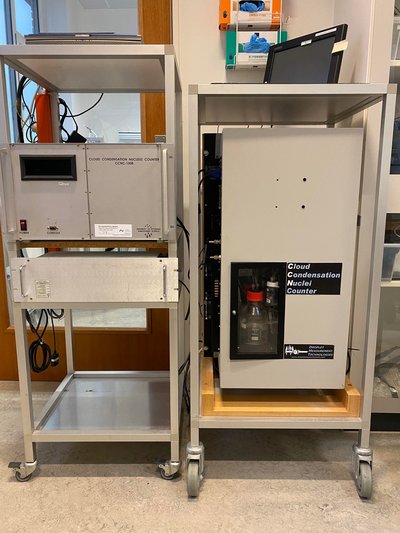
Aerosols are important for cloud formation and therefore it is also important to measure the properties of aerosols that form cloud condensation nuclei (CCN). This is done by cloud condensation nuclei counters, which measure the number of possible CCN. By exposing an aerosol to a variable water vapor supersaturation, the CCN counter determines the activated fraction as a function of supersaturation for various aerosols.
We currently possess two separate CCN counters. A Wyoming CCNC-100B, which was build at the Department of Atmospheric Science at the University of Wyoming, and a Droplet Measurements Technologies CCN counter.
The Wyoming CCN counter creates a water saturation vapor pressure gradient within a closed chamber. This is done by establishing a temperature gradient through the chamber, and thereby a region of supersaturation is created. By introducing an aerosol into the chamber, the particles are subjected to supersaturation and a laser beam measures the concentration of CCN-activated particles. By simultaneously measuring total particle concentration with a Condensation Particle Counter (CPC), the fraction of activated particles is found.
The Droplet Measurement Technologies CCN counter has a continuous-flow thermal-gradient diffusion chamber consisting of 50 cm long columns. Inside the columns, a thermodynamically unstable, supersaturated water vapor condition is created. The supersaturated water vapor condenses on the cloud condensation nuclei in the sample air to form droplets, just as cloud drops form in the atmosphere. As the introduced aerosols in the sample air are transformed into cloud droplets, an optical particle counter using side-scattering technology counts and sizes the activated particles.